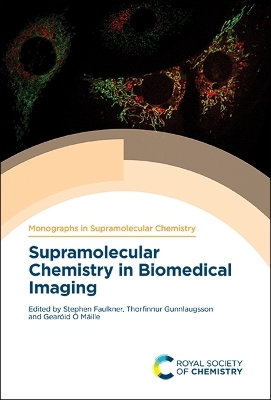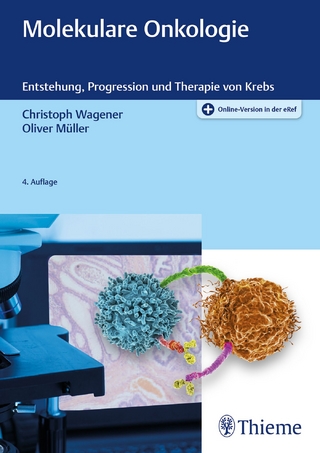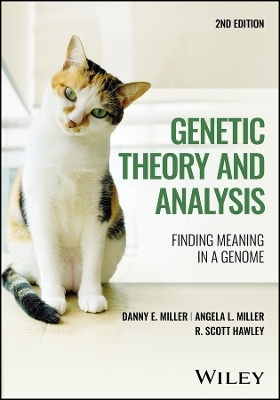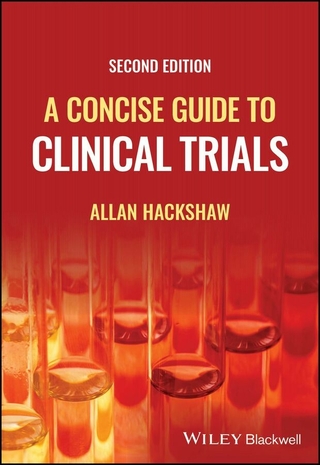
Supramolecular Chemistry in Biomedical Imaging
Royal Society of Chemistry (Verlag)
978-1-78262-297-0 (ISBN)
There have been many great advances in the field of biomedical imaging in recent years, with supramolecular chemistry playing a key role in the evolution of modern imaging techniques. Non-covalent supramolecular interactions are fundamental to countless biological processes, from host–guest binding to the stabilisation of complex structures. Supramolecular chemistry techniques can be employed to create probes that can be targeted to either exploit or disrupt these interactions, giving the potential for both diagnostic and therapeutic effects. Furthermore, in techniques such as contrast enhanced MRI, controlling the interactions between solvent molecules and the imaging agent is crucial to the development of the technique.
With rapid growth in the synthesis and study of molecular imaging agents, the understanding of their associated techniques has sometimes lagged behind. Supramolecular Chemistry in Biomedical Imaging will fill this gap by clarifying the state of current understanding and the nature of the underlying problems inherent to addressing problems in biology. It will cover both the techniques used in imaging and the molecular and supramolecular systems used to exploit them.
This publication targets academics coming to the field from mainstream supramolecular chemistry, research graduates and undergraduates interested in supramolecular chemistry, synthesis or imaging agents and imaging techniques for biomedical applications.
Thorfinnur (Thorri) Gunnlaugsson was born in Iceland, where he received his early education in his home town of Hafnarfjörður, before obtaining a B.Sc. in Chemistry from University of Iceland (UI). During his studies at UI he visited the laboratory of Professor A. P. de Silva at Queen's University of Belfast (Northern Ireland), as a research summer student and became fascinated by the world of supramolecular photochemistry, under the magic supervision of 'A.P.'. After receiving a Ph.D. from Queen's University in 1996, under A.P.'s direction, he joined the research group of Professor David Parker at University of Durham (England) as a postdoctoral fellow. Under the guidance of David the world of coordination chemistry and lanthanide luminescence was explored and the excitement continued! He was appointed as the Kinerton (IPSEN) Lecturer in Medicinal Organic Chemistry at the School of Chemistry, University of Dublin, Trinity College, in October 1998 and a Lecturer in Organic Chemistry in 2000. He was made a Fellow of Trinity College Dublin in 2003. In October 2004 he was appointed as an Associate Professor of Organic Chemistry at the same department and in 2008 a personal chair and Professor in Chemistry. He was a Visiting Professor at Faculty of Science and Technology- School of Life and Environmental Sciences. Deakin University, Victoria, Australia in 2005. In 2008 he was a visiting Professor in Bordeaux I CNRS in 2008. Steve Faulkner grew up in the Lake District near Keswick, then did his first and second degrees at The Queen's College, Oxford (1986-93) before moving to take up the Addison Wheeler Fellowship at the University of Durham (1993-98) and thence to a Lectureship in Chemistry at the University of Surrey. In 2001, he moved to the University of Manchester, where he was successively Lecturer, Senior Lecturer, Reader and, from 2005, Professor of Inorganic Chemistry. He arrived at the Chemical Research Laboratory and Keble College in 2008. Gearóid Ó Máille completed his Ph.D. at The University of Dublin, Trinity College, where he focused on the synthesis and spectroscopy of extended aromatic platforms and their metal complexes. In 2013 he was awarded an Irish Research Council Elevate fellowship in order to work with Prof. Stephen Faulkner (The University of Oxford) and Prof. Thorri Gunnlaugsson (TCD) on a cross-institutional project encompassing lanthanide spectroscopy, diagnostic imaging and supramolecular chemistry. In 2018 he moved to the Universität Bern, Switzerland, where he studies the properties and varied catalytic application of metal complexes bearing non-innocent ligands.
Targeting Supramolecular Imaging Agents for Wide Range of Applications;
Optical Spectroscopies: Detection of Biological Species, Conformations and Interactions;
Super-resolution Microscopy;
The Role of Fundamental Coordination Chemistry in the Development of Radioimaging Agents;
Supramolecular Aspects of Magnetic Resonance Imaging;
Lanthanide Containing Systems for Molecular Magnetic Resonance Imaging and Therapy;
Molecular Imaging in Diagnosis and Treatment of Brain Tumours;
Carbon Nanomaterials for Imaging;
Quantum Dots in Biological Imaging;
Future Directions in Biomedical Imaging Using Supramolecular Chemistry
| Erscheinungsdatum | 30.12.2019 |
|---|---|
| Reihe/Serie | Monographs in Supramolecular Chemistry ; Volume 33 |
| Verlagsort | Cambridge |
| Sprache | englisch |
| Maße | 156 x 234 mm |
| Gewicht | 1896 g |
| Themenwelt | Medizin / Pharmazie ► Medizinische Fachgebiete ► Biomedizin |
| Medizin / Pharmazie ► Medizinische Fachgebiete ► Radiologie / Bildgebende Verfahren | |
| Naturwissenschaften ► Biologie ► Genetik / Molekularbiologie | |
| Naturwissenschaften ► Chemie ► Organische Chemie | |
| ISBN-10 | 1-78262-297-7 / 1782622977 |
| ISBN-13 | 978-1-78262-297-0 / 9781782622970 |
| Zustand | Neuware |
| Informationen gemäß Produktsicherheitsverordnung (GPSR) | |
| Haben Sie eine Frage zum Produkt? |
aus dem Bereich


